Earlier this year, Tecsun released its long-awaited newest large portable: the Tecsun S-8800 portable shortwave/LW/AM-MW/FM receiver.
Though I fully intended to buy a Tecsun S-8800 for review, our friendly Hong Kong-based Tecsun retailer, Anon-Co, sent an S-8800 to me before I could. I’ve worked with Anna at Anon-Co for at least a decade and have purchased numerous radios for review, not to mention as gifts for family and friends. When she insisted to send it as a gift, I decided I would (gratefully) accept the unit.
I received the S-8800 on February 1 and promptly posted unboxing photos here on the SWLing Post.
My new Tecsun S-8800 had a serious problem, though––one that two early S-8800e adopters noticed as well––internally generated noises, also known as birdies. And while most receivers will have a few minor birdies scattered across the bands, this S-8800 hosted a whole chorus of them, overwhelming the bands and making use of the radio difficult. Read through this post thread for details.
I contacted Anna at Anon-Co and she immediately notified Tecsun; as a result, they halted distribution of the S-8800.
Tecsun took the S-8800 to their engineering team, and I’m happy to report they’ve now eliminated the horrible warbling DSP birdies of the initial unit I received.
On the S-8800s since released, while there are still a few minor birdies across the bands (more on that later), they’re merely what one might expect to find on any receiver. In short, the S-8800 now in production is a functional receiver, and a contender in its class.
I’ve had the S-8800 for a few weeks now and have had time to put it through its paces. What I present now is a review of the re-engineered Tecsun S-8800.
First impressions
In the spirit of full disclosure, I must note that I’m not as avid a user of large portables like the S-8800. Personally, my preference is for smaller, full-featured travel-friendly portables, or else larger tabletop models. I travel often and like to pack lightly, so I rarely reach for anything bigger than my trusty Sony ICF-SW7600GR, or Tecsun PL-880, and more often than not, I grab the ultra-compact Sony ICF-SW100 or C. Crane CC Skywave.
But to say that I never reach for large portables would be inaccurate. In fact, I use a Grundig GS350DL daily; it’s my analog kitchen radio. I rarely move the tuning dial (a good thing, since it unfortunately drifts) because it’s locked onto my in-house SSTran AM transmitter on 1570 kHz.
What large format portables like the GS350DL and S-8800 can provide that a small portable cannot is broad, rich, room-filling audio. In my world, good audio is an important factor in overall signal intelligibility.
The S-8800 chassis resembles several other receivers: the Grundig GS350DL, S450DLX, and more recently, the Field BT, just to name a few.
The body is made of a hard plastic (not rubberized) and feels rugged enough. The knobs and buttons also feel tactile and of comparable quality to the previous similar models noted above. With the rechargeable batteries inserted, it weighs about 3 pounds 4 ounces (1.5 KG).
The backlit display is large and viewable from almost any angle––even at a distance.
The main encoder (tuning knob) has appropriate amount of brake for most listeners. It wobbles very slightly, but functions amazingly well. I prefer it over its large portable predecessors, especially the 350GL. There is no soft mute while tuning, so band-scanning is a fluid, almost analog, process.
Both the “Band Select” and “AM BW” knobs have soft detents that mark steps in selection. In the field, I noticed that these can occasionally skip an increment when the detent only moves one position or the knob is turned very slowly. This doesn’t really affect functionality in any way, but I thought it worth noting nonetheless.
Like previous similar models, the S-8800 lacks a built-in keypad for direct frequency entry. That would be a major negative for a radio in this price class if the S-8800 didn’t come with one invaluable accessory: an infrared remote control.
Infrared (IR) Remote Control
The Tecsun S-8800 ships with a IR remote control, and as far as I’m concerned, it’s great.
The remote feels durable, fits well in the hand, and the back has a place for it to balance on your index finger when holding…
But more importantly, the remote works quite well. The controls are intuitive and the labeled buttons are quite easy to read. They’re also tactile and have a muted “click” response when pressed. Indeed, I wish my television’s remote was this well designed.
And the remote is quite useful, especially if you like listening from bed, from a porch, from the kitchen or dining room or den––or, in fact, from any space where you might wish to control the receiver at a distance. I believe its possible that every function of the S-8800 can be controlled with the remote––even the sleep timer!
Perhaps my dream remote for such a purpose would be backlit, but the S-8800’s remote is so simple to use, I’ve already nearly memorized where the buttons are located for nighttime use.
Operation Manual
The S-8800 ships with an informative operational manual, although this radio is intuitive enough that a seasoned radio listener will not need to reference it, save for advanced settings. Still, it’s written in clear language––with comparatively few English grammar errors––and the diagrams for both the radio and the remote are exceptional.
I referenced the manual several times to sort out ATS operation, saving/erasing memories, and to hunt down function shortcuts.
Features
The S-8800 is a feature-packed triple conversion receiver. Here’s an abridged list of its features, focusing on those most radio enthusiasts seek:
- Frequency coverage:
- LW: 100 – 519 kHz (1 kHz & 9 kHz steps)
- MW: 520 – 1710 kHz (1 kHz, 9 kHz and 10 kHz steps)
- SW: 1711 – 29,999 kHz (1 kHz & 5 kHz steps)
- Note in SSB mode on LW, MW and SW, tuning steps are 10 Hz and 1 kHz.
- FM: 64 – 108 MHz (selectable for various markets: Russia, The Caucasus, Caspian/Black Sea regions, Japan, China/Europe, and North America)
- Modes: AM, FM, SSB
- Variable filter widths
- AM: 6, 4, 3, and 2.3 kHz
- SSB: 4, 3, 2.3, 1.2, and 0.5 kHz
- Digital Signal Processing (DSP)
- Antenna gain selection: DX/Local
- External antenna connections: both BNC (SW and FM) and a high-impedance port (LW, MW and SW)
- Both 9 and 10 kHz spacing on mediumwave
- Dedicated fine-tuning control
- Auto Tuning Storage (ATS)
- 650 station memories
- FM stereo/mono
- Backlit LCD display
- Treble and bass tone controls
- RCA line-out audio
- Full-featured clock, alarm and sleep timer
- IR remote control
- Two 18650 lithium cells (included) that can be safely charged internally via USB
Wishlist? The S-8800 feature set is pretty comprehensive, but my dream large portable would also have synchronous detection and an RF gain control, though the latter is not common in the world of portable radios. Fortunately, the S-8800 does have a local/DX gain toggle.
I’m sure some enthusiasts would also like to see Bluetooth connectivity as on the Eton Field BT, but I personally don’t miss it. I like to keep my HF portables free from anything that could potentially raise the noise floor.
With the exception of synchronous detection, the S-8800 has a solid, comprehensive tool set.
Performance
Over the past two weeks, I’ve had the S-8800 on the air almost every day. I’ve compared it with a number of receivers, but mainly its smaller sibling, the popular Tecsun PL-880. Below, I break down my notes by band.
FM
As is typical with my shortwave portable reviews, I spent less time evaluating FM performance on the S-8800.
With that said, I did compare the S-8800 with the PL-880, PL-680 and CountyComm GP5-SSB and a few other portables. The S-8800 found my benchmark weaker broadcasters with ease.
Here’s a short video demonstrating FM performance with a broadcaster over 100 miles distant:
Click here to view on YouTube.
AM/Medium Wave
I’ve had more inquiries about S-8800 mediumwave performance than I’ve had about any other radio I’ve recently reviewed. Why? Well, for one thing, some radios in this particular portable format perform quite well on mediumwave––the C.Crane CCRadio-SW, for example, comes to mind. Also, the S-8800’s large front-facing speaker lends itself to superb AM audio.
Unfortunately, mediumwave is not the Tecsun S-8800’s strong suit.
I did extensive testing, comparing it with much smaller portables: the Tecsun PL-880, the Sony ICF-SW7600GR, the Digitech AR-1780, the CC Skywave, and even a pre-production CC Skywave SSB. All of these portables had better sensitivity on mediumwave.
I posted the following representative video a couple weeks ago in a post:
To reiterate from my previous post, comparing any modern radio with the Panasonic RF-2200 on mediumwave is hardly fair. For one, the RF-2200 has been out of production for a few decades. For another, the RF-2200 has a large rotatable ferrite bar antenna that provides excellent gain. The RF-2200 simply wipes the floor with all of my modern portables, as their ferrite bar antennas are but a fraction of the size.
To my ear, the S-8800’s mediumwave band seems noisier than its competitors. Perhaps this is why it struggles with marginally weak stations.
Here’s another comparison with the PL-880––this time at a totally different location:
Click here to view on YouTube.
With that said, when tuned to a local AM broadcaster, the S-8800 really shines. It produces rich audio which can be customized with bass/treble tone controls and by changing the AM filter width.
I also hooked up the S-8800 to my large horizontal loop antenna. This certainly did improve MW reception, but not as dramatically as I hoped. Additionally, it seemed to be very sensitive to RFI in my shack even when hooked up to the external antenna.
If you took the S-8800 to the field, added a decent inductively-coupled magnetic loop antenna, no doubt it would improve mediumwave reception, but I still doubt it would come close to the RF-2200 in performance. As long as I own the latter, I wouldn’t be motivated to do so.
Due to my schedule over the past few weeks, I’ve had precious little time to test the S-8800 on mediumwave at night, but some quick air checks proved performance was consistent with daytime testing.
I am pleased to report that no receiver overloading was observable during testing.
In short: if you’re only considering the S-8800 for mediumwave DXing, you should look elsewhere. I would suggest a dedicated AM broadcast receiver like the excellent CCradio 2E, a vintage Panasonic RF-2200, or perhaps a used GE Superadio.
LW – Longwave
I’ve spent less time on longwave than I have on mediumwave and shortwave.
With that said, the S-8800 was able to receive our local airport beacons at night with relative ease. I was not able to catch any transatlantic longwave broadcasters, but that’s no surprise as it’s almost impossible on even my commercial-grade receivers during the summer months here in North America.
As I said regarding the mediumwave band, I suspect there are much better radios out there for the longwave enthusiast.
SW – Shortwave
At the end of the day, I believe the Tecsun S-8800 was designed with the shortwave and amateur HF radio enthusiast in mind.
The S-8800 has gapless HF coverage from 1,711 kHz to 29,999 kHz, can be used both in AM or Single Sideband (selectable LSB/USB), and has adjustable bandwidth filters tailored to AM broadcast and SSB/CW (ham radio/utility/pirate) reception. The filter widths are well-chosen for each mode: 6, 4, 3, and 2.3 kHz on AM; 4, 3, 2.3, 1.2, and 0.5 kHz on SSB.
It also has a dedicated fine-tuning control that adjusts steps based on the mode.
All of these are desired features for the HF radio enthusiast.
I’m happy to report that the S-8800 is a very capable shortwave receiver, perhaps even one of the best portables currently on the market.
In every comparison test I made on shortwave, the S-8800 outperformed each of its competitors.
Check out the videos below and judge for yourself:
Weak signal on the 31 meter band:
Click here to view on YouTube.
Very weak signal and deep fading on 15,200 kHz
Click here to view on YouTube.
SSB: Ham Radio QSO on the 40 meter band
Click here to view on YouTube.
CW on the 20 meter band
Click here to view on YouTube.
I was pleasantly surprised by the audio in SSB mode and by how well the filters seem to work. Note in the video the warbling sound as I adjust the fine-tuning control on the S-8800. But it’s actually only present as I adjust the fine-tuning control; I noticed no stability issue once on frequency.
External antenna
Since the S-8800 has a handy standard BNC connector and high impedance AM antenna socket on the back, I hooked it up to my large horizontal loop. In my testing, it handled that antenna’s gain very well and I was most impressed with the performance.
The front end seems to be robust, and selectivity––which is excellent––was not compromised by my antenna. I was able to pull apart two broadcasts with only 5 kHz of separation that were both quite strong. The S-8800 locked onto the stronger of the two stations with ease. When tuned to the weaker station, I used SSB reception on the upper sideband to ignore the noisier lower sideband which was buried in the adjacent signal. Once I zero-beated the signal, it sounded quite good.
Final thoughts about shortwave performance
Perhaps what the S-8800 has going for it on shortwave is a combination of very good sensitivity, excellent selectivity, and a feature all too often overlooked: good audio fidelity (via the internal two-watt speaker).
The AGC (auto gain control) is actually fairly stable on the HF bands (less so on mediumwave). Like the Tecsun PL-880, the AGC has a soft hiss response when the signal fades below the AGC threshold. While I’m not crazy about this, I must confess that it is pretty easy on the ears when fading is pervasive.
I did note one quirk that could annoy those wishing to copy narrow SSB or CW. If the filter bandwidth is set to .5 kHz and you’re listening to a marginal CW signal, the AGC sometimes mutes the receiver during CW dead space. It equates to very unstable audio with audio levels jumping around wildly. This happened more often when I was copying moderate to weak CW signals. I’ve even noticed it when listening to SSB ham radio conversations, but mostly in the narrow bandwidths. I usually keep the filter set to 2.3 kHz or higher and it hasn’t been a problem at these settings. It’s worth noting that I have observed the same AGC behavior in my PL-880 at times.
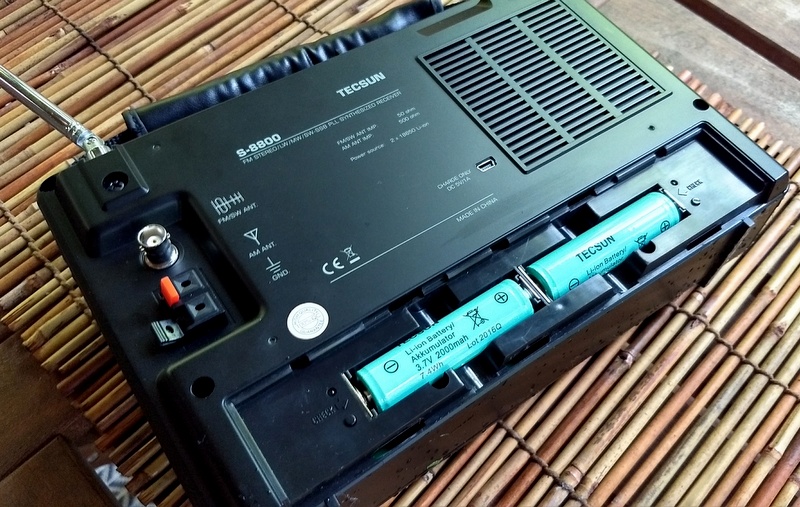
The S-8800 ships with two rechargeable lithium cells which provide hours of listening time from a full charge.
I never encountered overloading from local AM broadcasters on the shortwave bands, with the caveat that I never tested the S-8800 in an RF-rich urban market.
One thing I have noticed in general about the S-8800 is that it seems pretty sensitive to RFI indoors (electrical noise in the home, office, etc)––more so than my Sony ICF-SW7600GR, for example. If you live in a noisy environment and never plan to use an external antenna or take the radio outdoors, you might think twice about the S-8800.
Birdies
I’m pleased to report that Tecsun did properly address the “birdie” issue I mentioned at the beginning of this review. Still, like most receivers, the S-8800 does have some birdies across the bands. These birdies are well within the norm for such rigs: a relatively stable heterodyne sound. I made a short video to illustrate what I mean when I talk about a birdie:
Click here to view on YouTube.
I spent one afternoon carefully mapping out all of the birdies I could find across the longwave, mediumwave and shortwave bands.
Here’s what I mapped:
As you can see, there are no birdies in the middle of sensitive areas like broadcast bands, amateur radio bands, etc. A good report, in my book.
Note that while tuning through the shortwave bands, I used 5 kHz steps. I suppose there’s a possibility I might have missed very weak birdies doing this, but any strong birdies would have been received and noted within the 5 kHz window. On LW and MW, I tuned in 1 kHz increments.
Summary
Every radio has its pros and cons, of course. When I begin a review of a radio, I take notes from the very beginning so that I don’t forget my initial impressions. Following is the list I formed over the time I’ve been evaluating the Tecsun S-8800:
Pros:
- Brilliant audio fidelity from built-in speaker
- Dedicated AM bandwidth and fine tuning controls
- Excellent, bespoke IR remote control
- Capable SSB mode
- Excellent shortwave sensitivity (see con: mediumwave)
- Excellent shortwave selectivity
- Excellent FM performance
- Easy-to-read backlit LCD digital display
- Remote control beautifully equipped for full radio functionality
- Included 18650 rechargeable lithium batteries power radio for hours
Cons:
- Lackluster mediumwave performance (see pro: shortwave)
- No synchronous detector
- No direct keypad entry (Pro: Remote control has excellent keypad entry)
- Can’t charge and listen at the same time–not designed for AC operation
- No backstand
- Line-out audio level is a little high (hot)
- When in narrowest SSB filters, AGC can’t reliably handle audio/signal changes
- Slight “warbling” sound while using fine tune control in SSB mode
- No RDS display on the FM band
Conclusion:
As I’ve already mentioned, if your primary use of the S-8800 is for mediumwave or longwave DXing, you should look elsewhere. While the S-8800 will serve you well with local AM stations, it will not dig signals out of the noise like other better-equipped AM receivers. The GE Super Radio, Panasonic RF-2200, or CCRadio 2E are much better options.
But if you’re primarily a shortwave radio listener––? I think you’ll be pleased with the S-8800.
To my surprise, the S-8800 consistently out-performed my beloved Sony ICF-SW7600GR and my PL-880. I fully intend to compare it with other portables in the coming weeks and post the videos here on the SWLing Post. [I will update this review with any other findings.]
I did not mention this in previous posts, but the first S-8800 I received in January––the one with the birdie-chorus problem––also outperformed my other modern portables on shortwave. In part, I feared that when the Tecsun engineers addressed the birdie issue, it could have a negative impact on overall sensitivity. I’m happy to report that it did not.
What’s more, I realize that larger portables do have a place in my life. You might have noted that I did all of my review testing and preparation outdoors, mostly in a nearby national park. I do this, in part, to insure I’m far away from any RFI, but also I simply love playing radio outdoors.
And the S-8800 was a pleasure to tune and use in the field. I really like the large encoder and find that the multi-function knobs, tone controls, volume, and other buttons are well-spaced–I believe I could operate most of this receiver’s functions with gloves on in the winter. And again, there’s that excellent remote control…
Is the S-8800 a good value? Let’s talk price
Only yesterday, Anon-Co announced the price of the Tecun S-8800: $268 US with free shipping to the US.
This review was in final draft form two days before I learned the price from Anon-Co. I had assumed the price would not be released for another week or two at least, thus I made a few predictive statements that I’ll now quote here:
I understand that the S-8800e is being sold in Europe for 339 Euro, roughly $400 USD, plus shipping. There is no way I’d pay that price; it’s simply too much.
If the price exceeds $300 US, I’d suggest careful consideration, as the S-8800 price would be venturing into the realm of used Sony and Panasonic benchmark portables.
But. If this radio should be sold for less than $250, or even $200…? Being primarily a shortwave radio listener, I would certainly buy this radio for that price.
In the end, the price is $18 higher than the $250 I mentioned in my review draft, but I assumed shipping would be tacked on to that price. So $268 ended up being pretty close to the mark.
So I believe the Tecsun S-8800 hovers at the top price threshold of what most radio enthusiasts would be willing to pay for a portable. At $268, it’s over $100 more than the excellent PL-880 and only $20 less than the Tecsun S-2000. And for radio enthusiasts outside the US, it sounds like shipping will be added to the $268 price. I expect European consumers will pay a premium due to embedded (and required) sales tax and customs handling fees.
Click here to view at Anon-Co.
Nonetheless, I would still consider purchasing at the $268 US mark because of its shortwave performance, ability to connect external antennas, audio fidelity, and the included IR remote control.
I would like to see the price lower than $268. If the price were nearer the $200 mark, it would be a no-brainer––this radio would likely fly off the shelves, and I’d strongly suggest purchasing.
Perhaps, with time, the S-8800 price will decrease. In the meantime, if you have the budget, I believe the S-8800 would make for a nice field companion, pulling weak DX out of the noise with excellent audio fidelity to boot. It’s already been a great field companion for me…and, I’m sure, will accompany me into the field again.

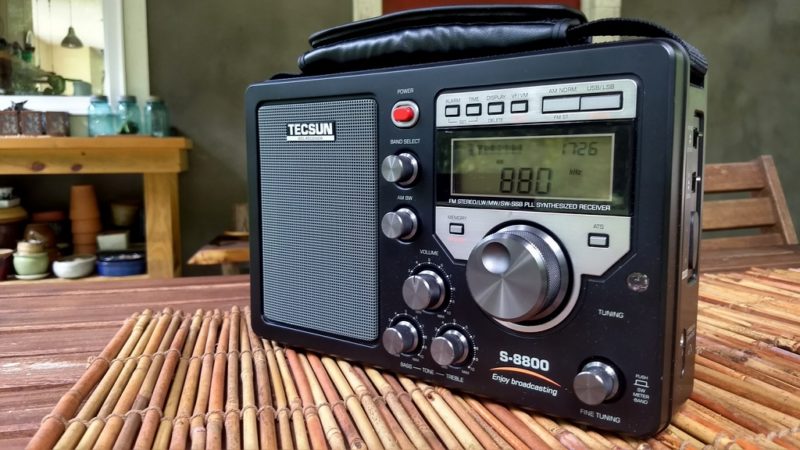
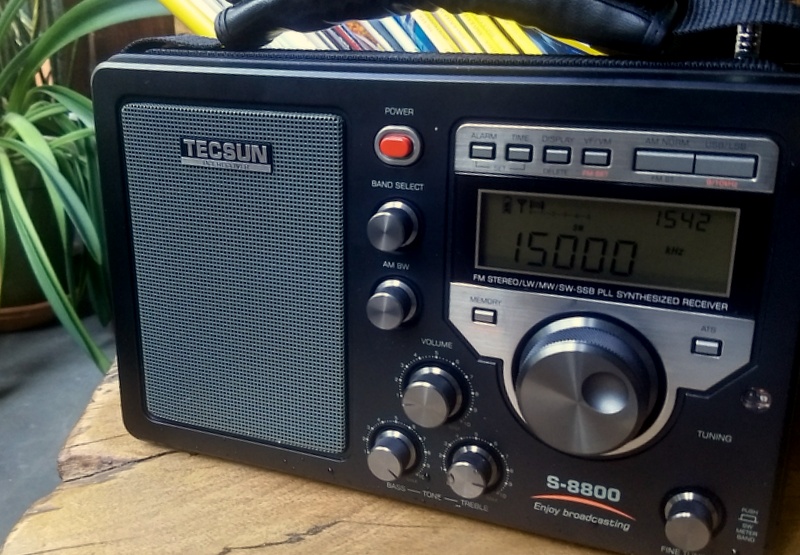
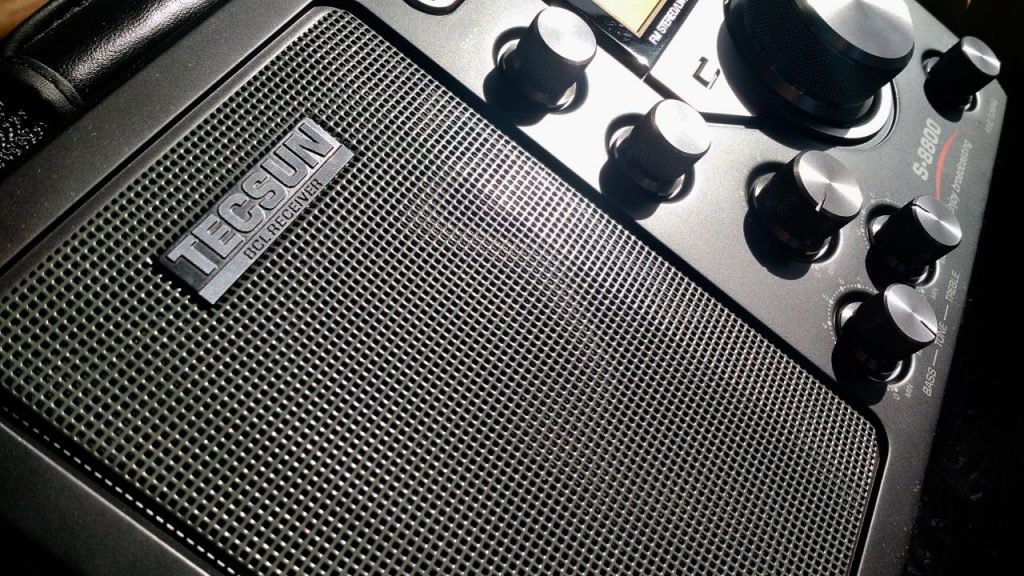
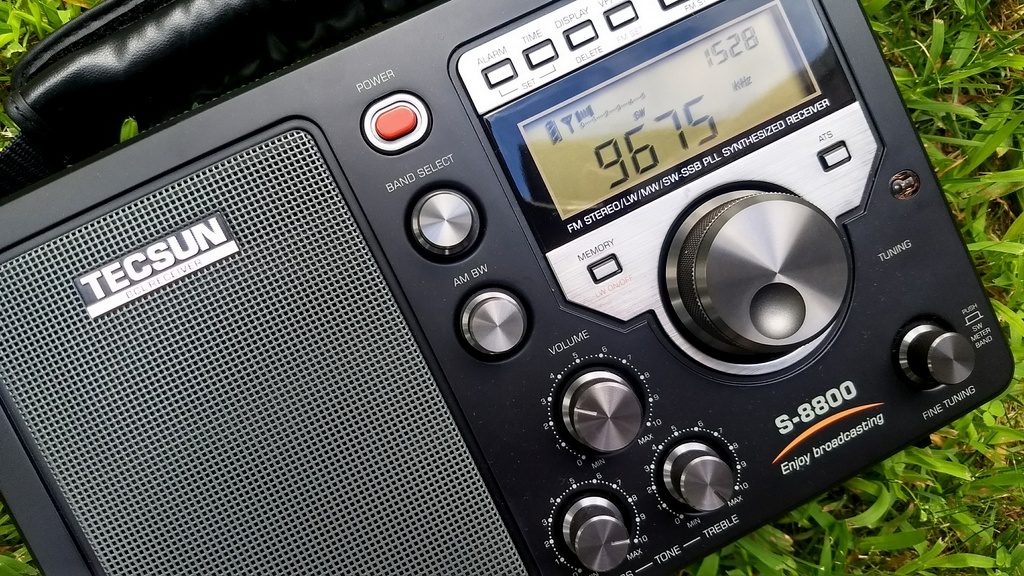
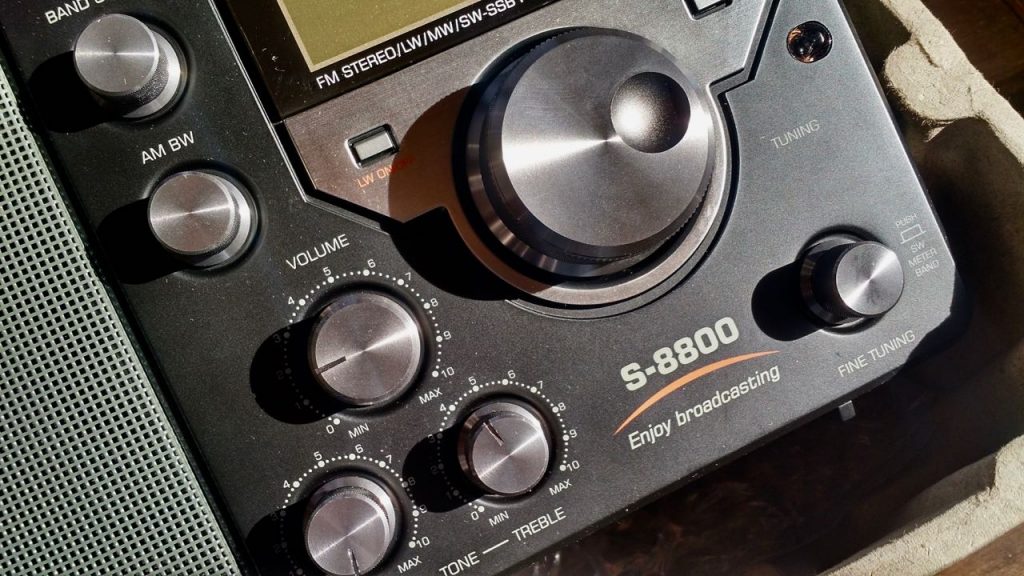
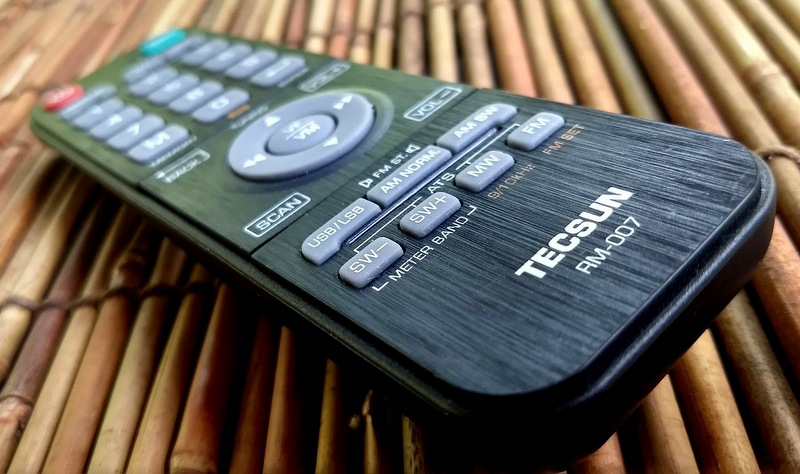
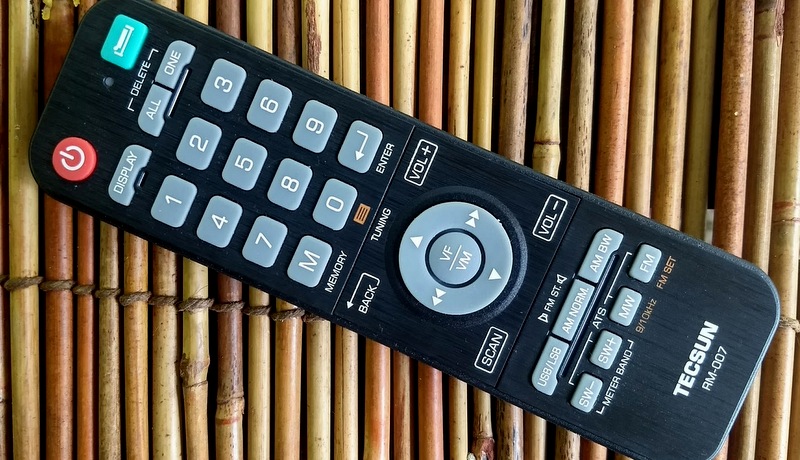
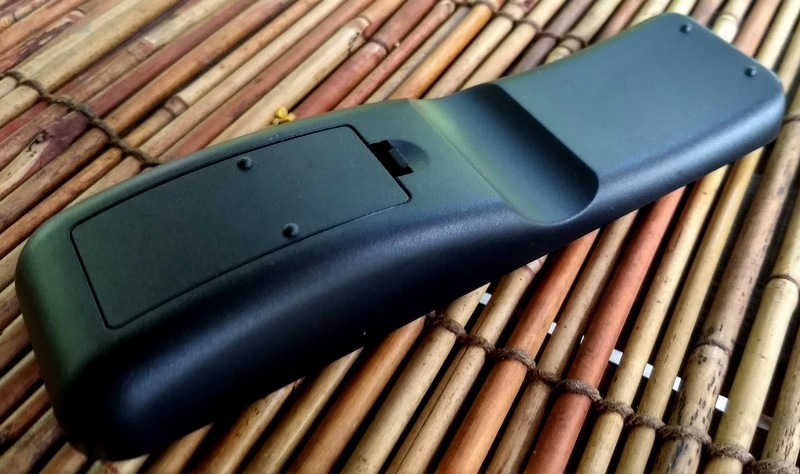
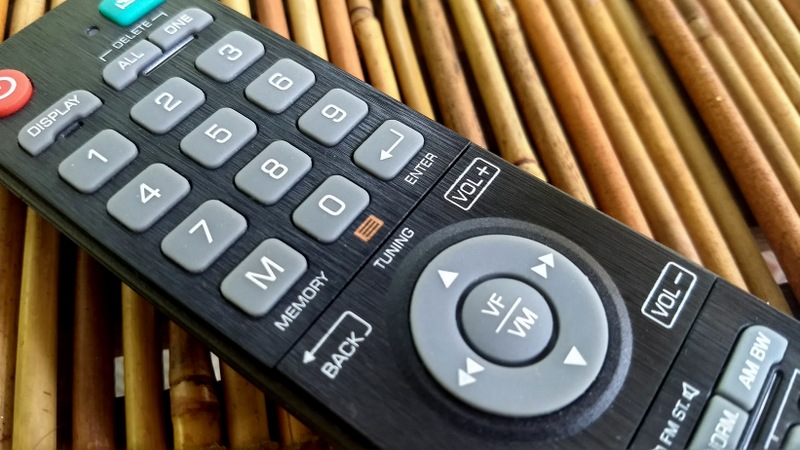
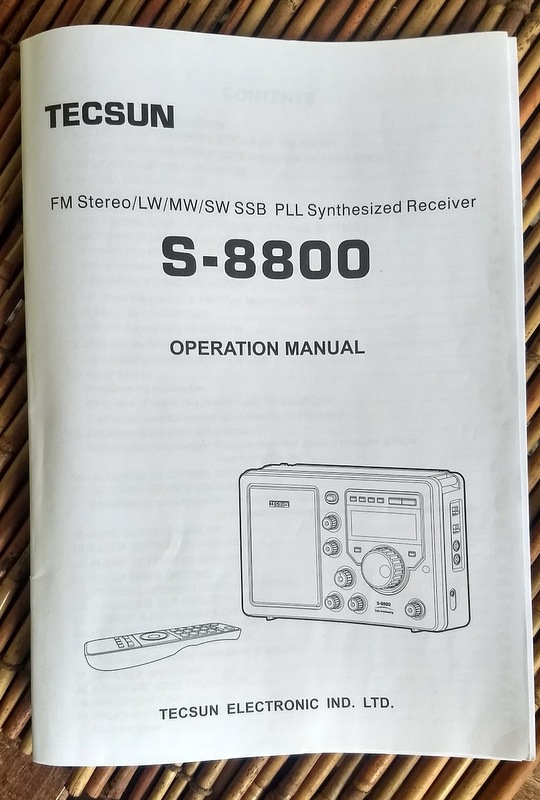
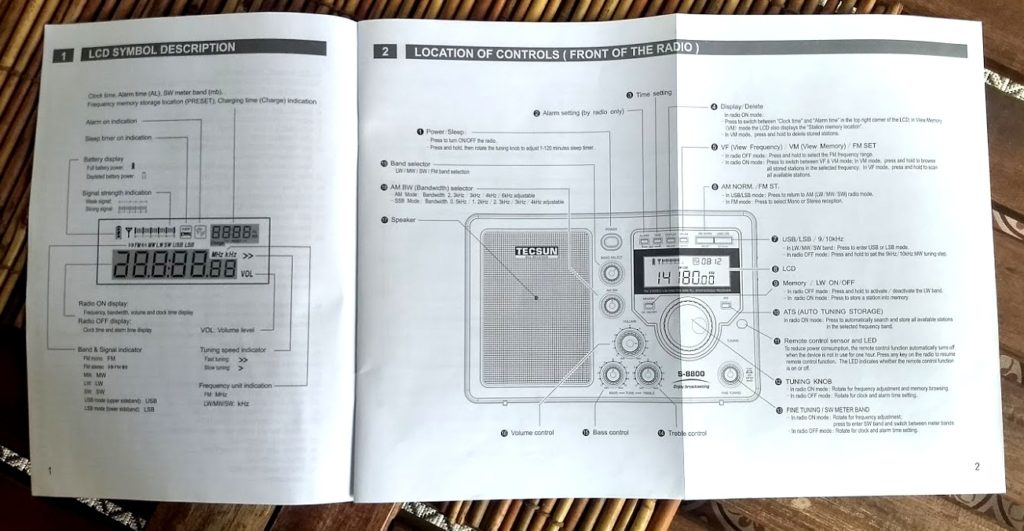
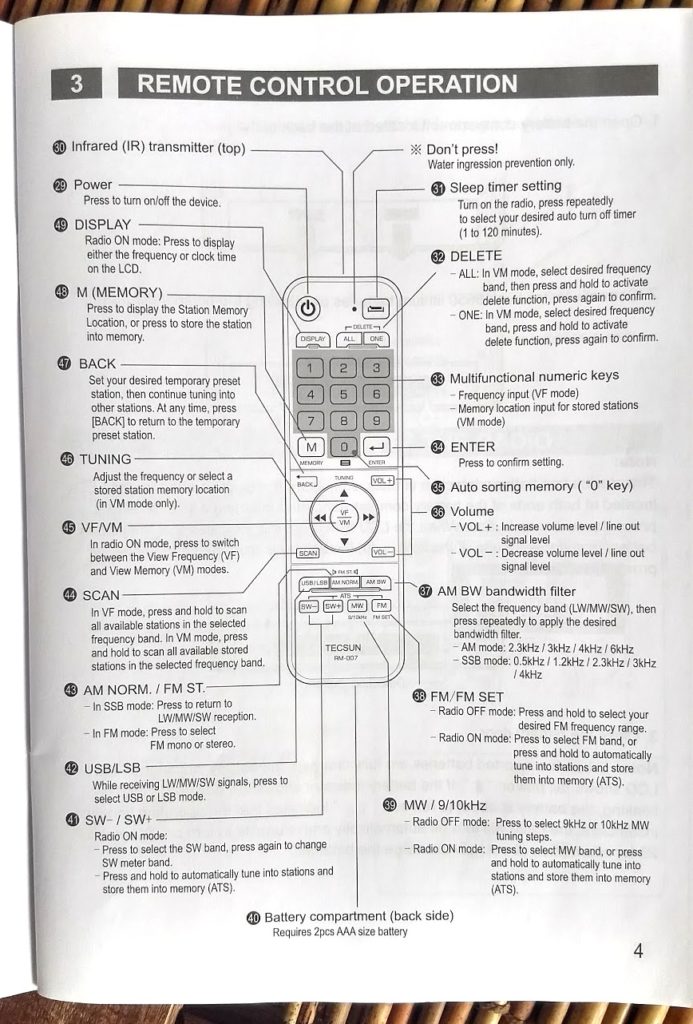
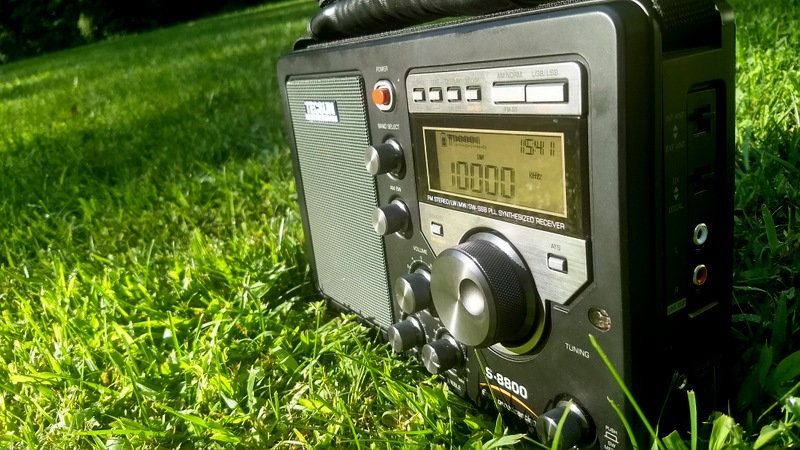
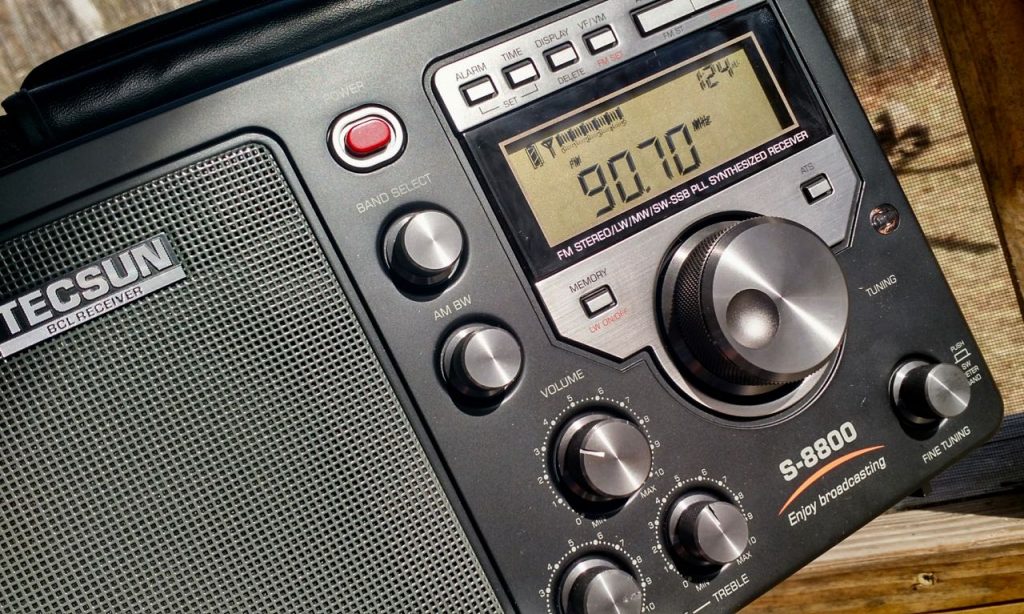
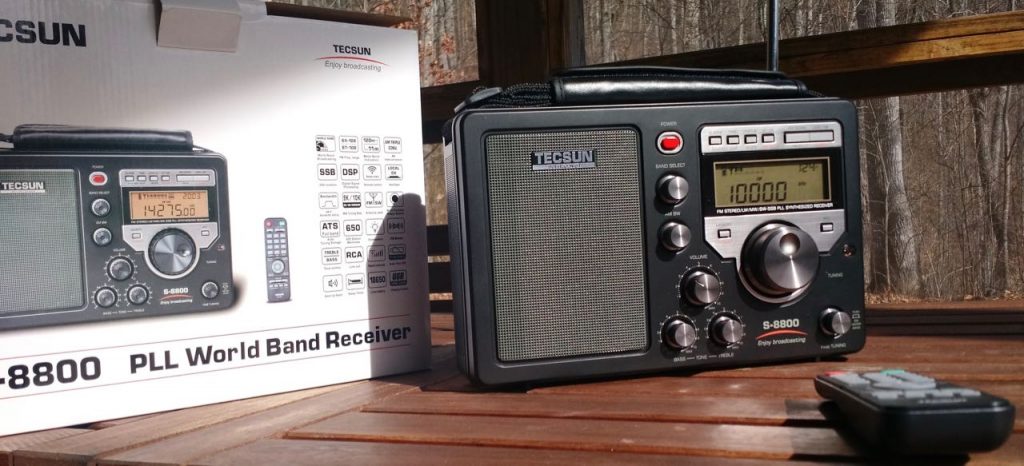
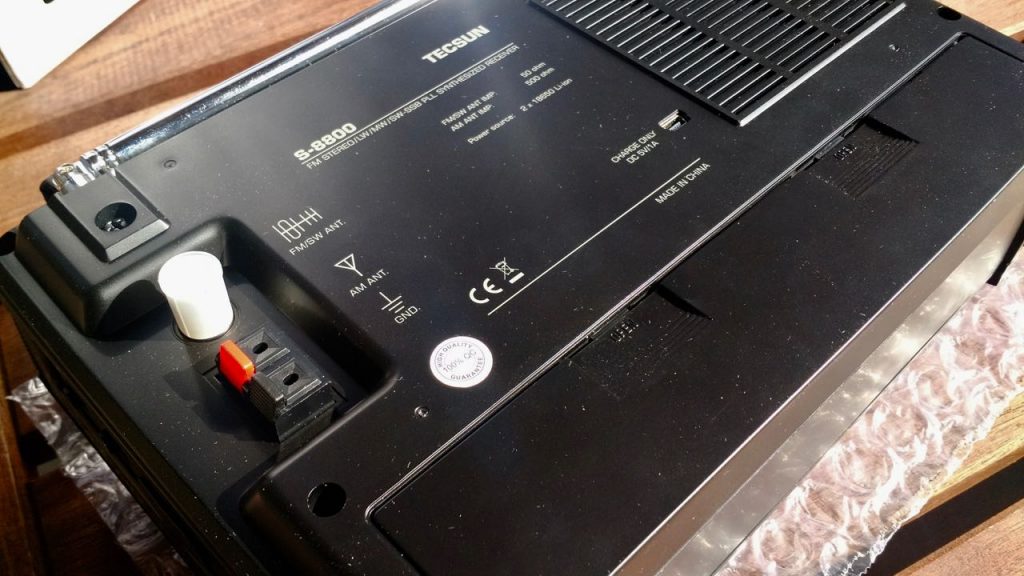
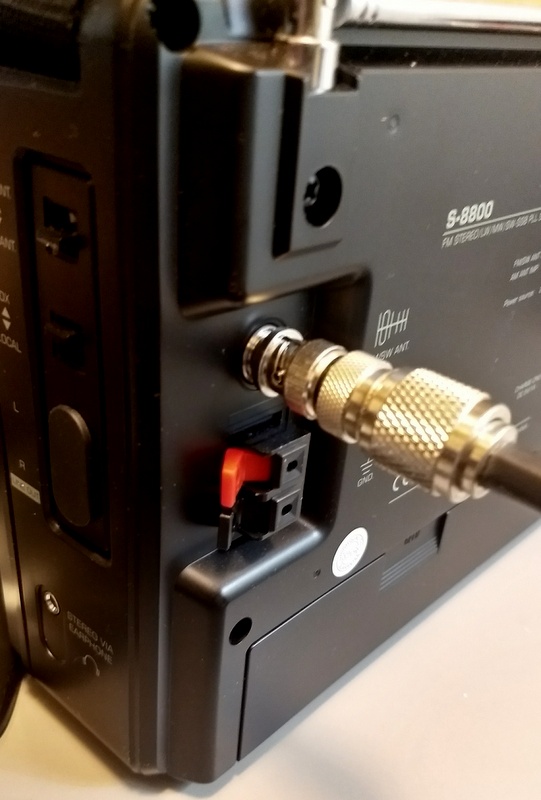
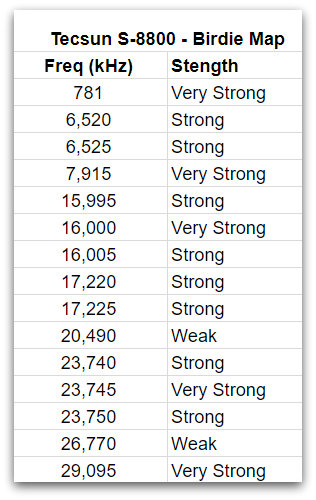
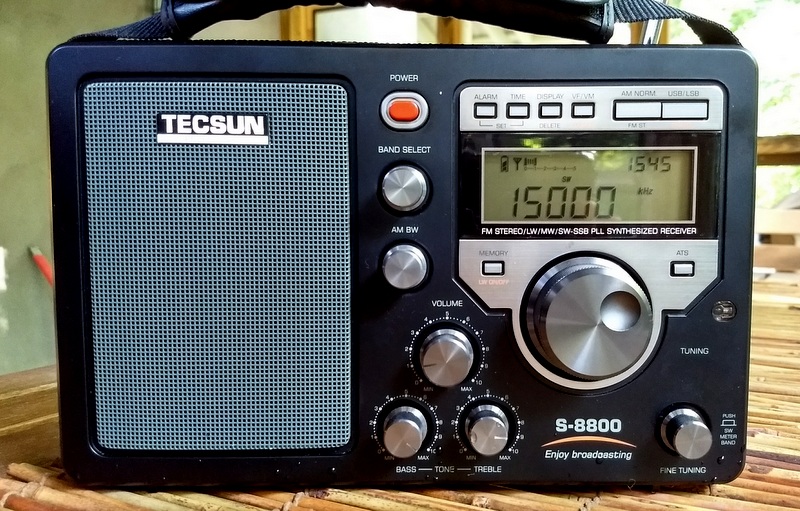
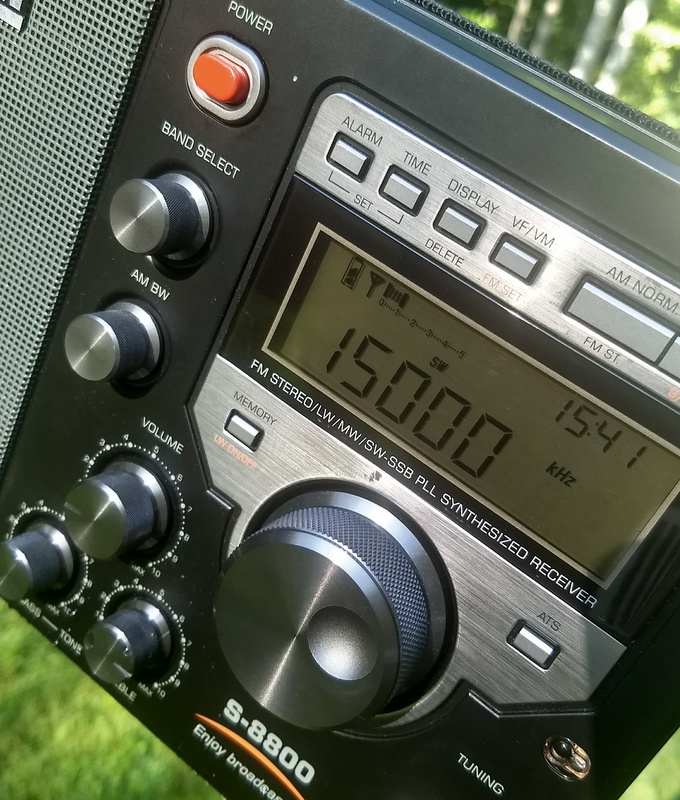
I obtained one of these S-8800’s and within 15-minutes it was repacked and on its way back to HK, absolutely the worst SSB performance I have ever observed, no adjective is to rough for the pure awfulness of its ssb performance, so bad that really, why would you even list such as a feature of the radio? Do you know what is a better radio than the S-8800 at less than half the price, the eton field radio as it sounds just as good and doesn’t claim anything its not, as this trash does! $265.00 for this is theft!
I know this is an old post but my S8800 has excellent performance on SSB.
Hello. I have had the Tecsun S-8800 for two years now. I must confirm that SSB works very well on short waves. There are also a few birds, but in places where nothing is actually transmitting. VHF is still very good. Unfortunately, medium and long waves are weak. But I bought the receiver primarily to receive short waves. FM modulation on short waves from 26 MHz to 29.999 MHz is missing. An external power supply socket could also be installed to connect a larger capacity battery. Overall, a successful purchase.
Regards – Chris
The information on these articles would be more useful if they included posting date. This review is a prime example whereby having a date will mean knowing for sure when the “fix” the company implemented took place.
Useful information to have whether I am buying a new unit (that could be old stock) or a used one. As is, the utility of the information provided is greatly hindered.
The posting date is always in the footer of each post which also includes tags, categories, and the author.
Hello everyone, thanks for the information provided. I recently bought a Tecsun S8800 and the AM, SW and LW modes have stopped working. Only FM mode works
Is there any hidden function that can solve this? Thank you for what you can inform me. Best regards.
Jose Luis
The way I see it, these companies continue to produce the same radios with minor changes. Often times, the changes aren’t necessarily beneficial. In the grand scheme of things, radios should be far more advanced by now. A comparable radio from the 70s, for example, can easily preform as good or better than a modern one. At the very least, all modern radios in this price range should have HD radio and Sirius XM as options. Overall, they should be able to perform leaps better than anything produced even 10 yrs ago. Why the stagnation?
In the article you mentioned “Sony and Panasonic benchmark portables”. Would the Sony ICF-SW7600GR and the Panasonic RF-2200 fall into that category? Any others you could add to that list? Thanks!
I received this radio about a week ago; I’m a fan of “field” radios. I have paired this for comparison with my old Sony icf 5900 (1976 edition) and it has been interesting. Sensitivity wise the two are quite close, with maybe an edge to the Tecsun. But the Tecsun, not surprisingly, comes way out ahead on selectivity as the Sony is hardly “feature rich”.
I paid about the same for both radios – the Sony off Ebay and the Tecsun from a shop in Portsmouth England. Things haven’t actually changed that much in field radio performance in the last 40 years, but if you want a good contemporary shortwave field radio the Tecsun is a good buy.
Hi,
Thank you very much for this very good and detailed review….
I have now got a new Tecsun S8800e without the famous birdy problem and I do agree fully with this review.
The set is definitely not very sensitive on LW and on MW… There is a totally different story on shortwave, where the receiver performs well..
Tecsun s 8800 is the best of it all for me compared to pl 880 i was loosing my am and sw and the station was synching and never coming back , thats not for the s 8800 i get 71 am stations and on pl 880 even with an 200 i was failing getting good dedicated station uptime i could only get as far as 15 am stations , when on DX i get better reception for the s 8800. And the shortwave is persistant too. What a great machine with tecsun an 200am antenna .
Poor sensitivity on medium and long waves is the result of the use of broadband magnetic antennas of small size.
On the one hand, these antennas are extremely inefficient, and on the other hand are located near the digital part of the receiver and are subject to interference.
It is completely incomprehensible what prevents to enter into all similar receivers the possibility of switching antennas, as it was in the old Degen DE-1103. I immediately remove my receivers from the useless magnetic antenna and have not regretted it yet.
Hi Thomas, thank you for this very thorough review of the S-8800 As someone who spends a lot of time out in the field with portables, I’m always interested in any new receiver with demonstrable DXing credentials. Given this new Tecsun product can out-do their excellent PL-880 on sensitivity, it’s definitely worthy of our attention. Pehaps Santa Claus will bring me on lol. Thanks again for this excellent review. Best, Clint
Excellent work, Thomas, on tracking the S-8800 roll out from beginning to end. As a former technical editor/writer, I commend you on your painstaking attention to detail. I can’t imagine the hours and level of effort that you had to put forth on this project. The entire shortwave listening community should be very appreciative of this effort and the many others that have preceded it. I know I am. Congratulations on a job well done. RF
Great review thanks, I’ve been waiting for this !
Have to say that the deal breaker for me is LW/MW performance , after all , what’s the point of including these bands at all if the performance is so poor ? the only Tecsun I’ve tried with decent performance on LW?MW is the S-2000, naturally with it’s large ferrite bar and I certainly won’t be buying the S-8800 because of the poor LW/MW performance.
Tecsun, I hope you’re paying attention !
It’s about time now that Tecsun move to a different type display and include RDS.
A DRM capable radio would be amazing , now there’s a radio I’d buy !
SW radio manufacturers have tried to implement synchronous detectection in a too difficult way i.e. by synchronizing an oscillator to the carrier frequency. An easier method would be to extract and amplify the carrier and use this extracted and amplfied carrier in detection stage as done in the following two circuits:
A simple synch detector by D. Edwards:
http://archive.siliconchip.com.au/cms/A_110651/article.html
G.W. Short homodyne:
http://home.kpn.nl/a.van.waarde/id26.htm
Both of these circuits extract the carrier in the similar way: by removing the modulation by limiting the signal so that only a square wave is left. This square wave has the carrier frequency + harmonic frequencies. The harmonics are filtered out in the resonance circuits. The advantage of this method over the traditionally used synchronous oscillator method is that exactly correct synch frequency is guaranteed – no wobbling is possible.
A simple synch detector could be easily implemented within a dsp chip – let’s hope this will happen. On the other hand those who have some electronics skills could add a simple synch detector to their superhet radios already now.
Out of the shadows where lurkers live……
Great review. I echo your sentiments that if this was priced at the $200 level, they’d be flying off the shelf. At $268, this is going to be a tough sell. New SWLs will stop at an 880 or some other equivalent and experienced listeners will already have a radio that offers nearly everything the 8800 does.
I guess we should all be happy that manufactures still see a reason to introduce lower priced SW receivers. The Internet hasn’t won yet!
Wow! Thorough review, Thomas. Thank you. As a SWL, there’s a lot to like about the long awaited S-8800. I think I’d appreciate the solid audio quality of this radio. The lack of direct-entry keypad (remote is a nice compromise, though) and capable sychronous detection is disappointing given the price point. If I didn’t already own a PL-680, I might consider taking the plunge. It seems like this is THE portable to own right now. The devil’s advocate might justify the price compared to the Grundig Satellit 750/Tecsun S-2000, but owning a very capable portable and an Icom R-71a, I’ll likely pass on the S-8800 for the time being. If prices come down, perhaps I’ll change my tune, no pun intended.
Thanks again, Thomas.
-Peat
Thank you for the excellent review of the Tecsun S-8800, Thomas. I took my time reading the review and watching the videos.
On the whole, the S-8800 looks to be a good choice for shortwave listeners who want a portable radio with a larger form factor (a substantial 272 x 173 x 88 mm or 10 11/16 x 6 13/16 x 3 1/4″). I was impressed with the SW performance on the whip antenna including SSB. FM performance seems much better than average for multiband portables.
Published audio specs for the S-8800 are audio output greater than or equal to 900mW with a speaker rated for 2W. Compare this to the much smaller Sangean ATS-909X with audio output of 1W into a 3″ speaker rated at 3W. Typically, radios are designed with speakers rated for higher power than the output power. This is to protect the speaker from damaging power transients. I would like to know the speaker size used on the S-8800. Speaker size and audio output power don’t tell everything about audio quality especially when speaker efficiency is wildly variable but it is a useful bit of information.
Given how poorly SYNC features actually work on contemporary SW portables I don’t see the lack of SYNC to be a major deficit. At a price point over $200 however, no RDS feature for FM is a major handicap. RDS is not only a fun and informative feature it is a proven tool for sporadic-E DXing. Too bad about the poor MW performance. I agree that given the size of this radio the lack of an RF gain potentiometer control is a serious omission. I must say that judging from your videos the audio from the S-8800 built-in speaker seems very well tailored for both SW and FM.
Again, thanks for the excellent and knowledgeable review.
Thank you Dan! And thanks for the reminder about RDS–I had noted that in the field, but forgot to transfer it to my review draft. Will add that as a con.
Dan,
Yes, I’d have to re-consider my comment above and agree w/ you re: SYNC … SYNC hasn’t been very good on contemporary radios. But at that price point, they should at least TRY 🙂
Thomas, do you know if SSB works on MW and how stable is it? Could be a way of avoiding interference without needing Sync.
Yes, SSB works on both MW and LW, actually, and seems to be quite stable.
Nice review, as usual, Thomas. I like the fact you included your “pre-price release” thoughts – and I concur after reading your review (with the extremely helpful YouTube recordings). I wonder if the previously released European version, the S-8800E WELLENJAGD EDITION, has been re-engineered like this version has been compared to the initial release you received for Beta testing?
It is a handsome radio and it seems to perform well on Shortwave. I was especially impressed with the 40M ham recording. The lack of SYNC DETECTION, at this price point, is disappointing.
Having [if memory serves] 11 portables, I’ll likely sit on the sidelines for now. If the price trends downward, I might consider it in the future.
Thanks again Thomas.
Thank you, Troy! I know that Europe is also receiving re-worked units as their first batch also had the DSP birdie problem.
Oh, and ONLY 11 portables? You, sir, have a severe radio deficit! 🙂
*880* (!) sorry for the typos.
Very good and thorough review, I was looking forward to it, very worth reading !
I appreciate the extra sensitivity that it has, more than the 800, and the good SSB sound, probably better than the 800, with the same it has the same attractive array of filters, so, basically, an improved 800 as it looks, which is great, and the remote control idea makes it highly flexible.
I´m waiting for Santa Claus I think – wouldn´t mind the import, it is a normal pill to swallow. The radio looks great, and I am used to take out the “heavy” laptop-sized radios anyway 🙂
Please add as soon as you find out how long one full double battery load lasts – it´s probably comparable with the long lasting time of the 800?
Thank you, Frank. I do plan to do a test to see how long fully-charged batteries last. It may be a few weeks, though, as I’ve so much on my plate. Of course, a hurricane is headed our way, so perhaps I’ll have time for a “real world” battery test!
Right, of course, and I hope all goes well for everyone in the path of the hurricanes. A local flooding cut us off the electricity + LAN internet for a few days earlier this summer – makes you aware how vulnerable we are.
Thank you for a very interesting review! I wonder what the price will be for us here in Europe. I don’t suppose we’ll get the free shipping that the US folks get.
One thing I noticed on your PL-880 in the recordings above. When you turn on the radio, it seems to me that immediately after the initial fade in, the audio is muffled for a second or two, then it suddenly brightens up. Am I right? My PL-880 doesn’t do that. Just being curious.
Thank you, Tudor. Yes, there is a moment of perhaps two sends where the audio is muffled before it accomplishes full volume. I assume this is the audio amplifier chain engaging, though I really don’t know. Keep in mind that my PL-880 is one of the first production runs. I really need to give this one away and purchase a late model.